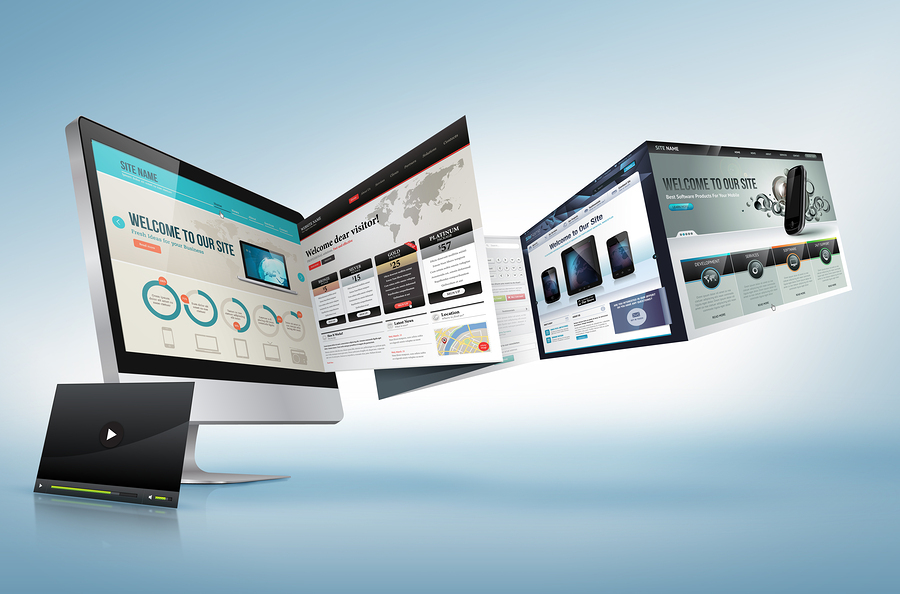Modern Site Design That Records Interest and Converts
In a progressively digital landscape, modern-day site design has arised as a critical factor in capturing customer interest and driving conversions. By strategically using aesthetic pecking order, responsive formats, and engaging interactive elements, designers can develop experiences that not just draw in visitors yet likewise facilitate significant interactions. In addition, efficient call-to-action strategies play an essential role in assisting users towards desired outcomes. As we explore these essential parts, it becomes clear that comprehending their interaction can dramatically impact a web site's performance and user satisfaction. What are the crucial elements that really make a distinction?
Significance of Visual Pecking Order
Visual hierarchy is a vital component in internet site layout, as it overviews individuals' interest and improves their overall experience. By strategically arranging material, developers can guide users to the most vital details initially, consequently raising interaction and enhancing usability. Reliable visual power structure utilizes different strategies, including dimension, shade, spacing, and comparison. Bigger elements normally draw the eye, while contrasting shades can highlight crucial messages, making them stand apart among more controlled components.
Incorporating a sensible flow in content plan is crucial; for instance, putting the most critical information at the top of a page promotes prompt acknowledgment. In addition, regular use typography, such as differing font sizes and styles, assists develop a clear content structure. This organization not only aids in navigation but additionally develops count on, as individuals feel a lot more comfy when they can easily discover what they are looking for.
Eventually, a well-executed visual pecking order not just boosts visual charm however likewise considerably influences individual behavior. By prioritizing important aspects and guaranteeing a seamless experience, designers can successfully transform site visitors into customers, strengthening the relevance of this foundational design principle in contemporary website development.
Responsive Style for All Tools
Developing a seamless experience throughout various gadgets is important in today's digital landscape, where users access web sites from tablets, smartphones, and desktop computers alike. Receptive layout is a critical strategy that makes sure internet sites adapt fluidly to different screen alignments, sizes, and resolutions. By employing flexible grids, photos, and CSS media questions, designers can develop layouts that preserve aesthetic stability and performance, no matter of the gadget being made use of.
The importance of receptive design expands beyond appearances; it straight influences individual interaction and conversion prices. A site that operates well on all gadgets urges longer visits and lowers bounce prices, as users are most likely to interact with content that is very easy to navigate. In addition, internet search engine, particularly Google, focus on mobile-friendly sites in their positions, making receptive design an essential part of seo (SEO)
Including responsive layout not only boosts user experience however also enhances the advancement procedure. By creating a solitary site that functions across devices, services can conserve time and resources contrasted to establishing different mobile and desktop variations. Ultimately, receptive design is a fundamental strategy for contemporary web site style, making sure ease of access and contentment for all customers, no matter their device.
Engaging Interactive Components
While a responsive design prepares for a functional website, including appealing interactive components is critical for recording individual interest and fostering deeper links. Website Design. Interactive elements, such as computer animations, tests, and clickable infographics, create a much more dynamic individual experience, encouraging site visitors to invest more time on the website
Incorporating interactive functions can also lead users via facility information, making it much easier to absorb web content. For example, interactive sliders can show product variants, while embedded videos can provide demos or testimonials that resonate even more than fixed photos or text. Gamification methods, like incentives for involving or completing tasks with content, can boost user inspiration and retention.
Reliable usage of interactive aspects not just improves the user experience but can likewise lead to greater conversion rates. It is crucial to stabilize interactivity with efficiency; excessively complicated features may hinder site rate, negatively influencing customer satisfaction.
Structured Navigation Practices
Effective navigation is a foundation of any type of effective internet site, as it straight influences individual experience and content ease of access. Structured navigation practices make certain that individuals can quickly locate details, improving their interaction with the website. A well-structured navigating menu need to be intuitive and straightforward, normally including a limited number of key classifications to stay clear of frustrating read the article site visitors.
To accomplish structured navigating, designers need to focus on an ordered structure that rationally arranges content. Implementing breadcrumb routes can give individuals with context about their current place within the website, permitting seamless backtracking. Additionally, utilizing drop-down food selections can efficiently conserve space while still giving accessibility to subcategories.
Receptive layout is vital, as navigation ought to be useful across all gadgets (Website Design). Mobile users, specifically, gain from touch-friendly menus and retractable areas that preserve functionality without compromising appearances

Efficient Call-to-Action Methods
A well-crafted call-to-action (CTA) is crucial for leading individuals toward desired results on a website, as it urges them to engage with content or buy. To maximize their performance, CTAs need to be clear, compelling, and purposefully put throughout the site.
First, utilize action-oriented language that connects urgency or value, such as "Obtain Begun," "Sign up with Now," or "Case Your Discount." This language not just encourages individuals but likewise sets clear expectations about the following steps.
Second, consider layout components; CTAs ought to stick out visually via contrasting shades, ample whitespace, and noticeable positioning. A switch that is very easy to see and click increases the probability of customer communication.
Furthermore, customizing CTAs based on user actions or demographics can dramatically improve engagement. Tailored messages resonate more with users, driving greater conversion rates.

Conclusion
In conclusion, contemporary web site layout stresses the integration of aesthetic hierarchy, responsive layouts, involving interactive components, structured navigation, and efficient Read Full Report call-to-action strategies. These elements collectively boost user experience, making sure that visitors stay engaged and inspired to explore content further. By prioritizing these layout concepts, blog here organizations can substantially boost individual retention and conversion prices, inevitably resulting in better success in the electronic landscape. The continuous development of website design highlights its critical function in reliable on-line communication and advertising.
In a significantly electronic landscape, contemporary site layout has arised as a pivotal aspect in recording customer focus and driving conversions.Visual hierarchy is an essential element in internet site style, as it overviews customers' interest and enhances their general experience.The relevance of receptive layout extends beyond visual appeals; it straight impacts user involvement and conversion rates.Integrating responsive style not only boosts user experience yet likewise enhances the development procedure. Inevitably, receptive design is a basic method for contemporary site style, ensuring accessibility and complete satisfaction for all users, no matter of their tool.
Comments on “How Website Design Affects User Experience and Customer Engagement”